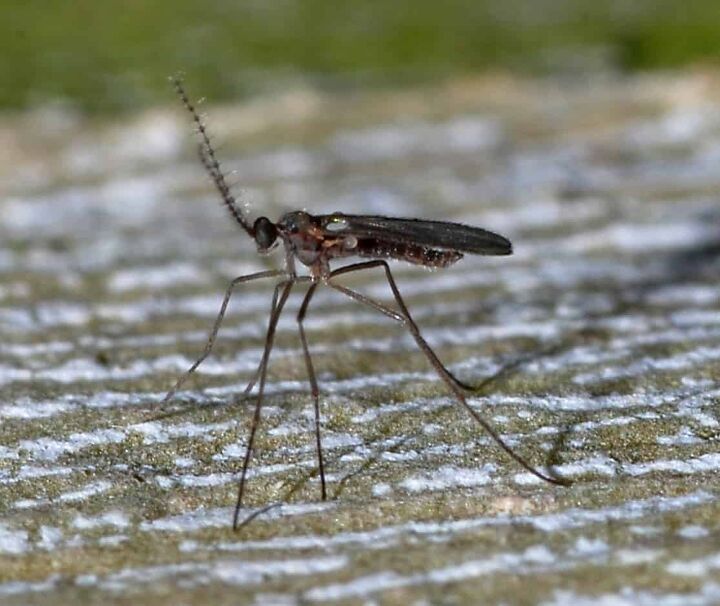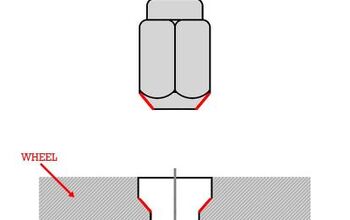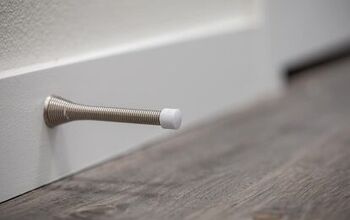12 Different Types of Gnats (with Photos)

Gnats are, undeniably, an unwelcome guest in any home. When you discover that you have a gnat infestation in your house, it’s important that you act quickly to find and fix the problem before it can get any worse. In order to know how to get rid of gnats, you must be able to identify what type of gnats have set up shop in your home.
These small pests are a part of the fly family and won’t travel far from the moist soil where they lay their eggs. Because of this, it can be rather easy to locate their feeding grounds and breeding spots. To effectively free your house of your gnat problem, you’ll want to be able to determine which species is occupying your home and then perform the most efficient method for eliminating them.
Some of the most common gnats include fungus gnats, fruit flies, eye gnats, buffalo gnats, and drain gnats, to name a few. We’ve gathered a list of 12 different types of gnats to help you eradicate your gnat infestation for good.
Where Do Gnats Come From?
If you’ve discovered a gnat infestation in your home, your first thought may be where are they coming from? Also, why are they attracted to your home? Gnats can be found in a range of different places, and the species that you see depends on the particular location and the source of the problem.
The fungus gnat, which is the most common type found in homes, is typically found near houseplants. They may have been brought in with the plants you purchased from the store. Though, they can also infiltrate your home through small holes in your window screens, or gaps in your window frames and doors.
Non-biting midges, on the other hand, are found near freshwater sources and moist soil. For instance, if you have mud, sand, or decomposing plants on your property, you might find biting midges in your yard. Regardless, gnats are drawn to organic matter, scent, and moisture. Therefore, it is crucial to keep your house and property free of excess moisture, decaying greenery, and sweet smells.
Types of Gnats
To tackle an infestation of gnats, it is imperative that you discover the specific type of gnats that you are dealing with. That way, you can implement the proper termination method. The following list of “types of gnats” outlines the most common varieties that you will find in and around the home.
1. Fungus Gnats
There are over 1,000 species of the black gnat, with the most common being the fungus gnat. Also referred to as winter gnats, fungus gnats are approximately 1/16 to 1/8 an inch in size. This tiny fly is often found feeding on the roots and fungi of plants. Adults have long legs and are a grayish-black color, with thin, long wings that feature a vein pattern.
Fungus gnat eggs are barely visible, appearing smooth, oval, semi-transparent, and a shiny white shade. The larvae are white, thread-like, and don’t have legs. The fungus gnat lives for approximately a month, laying around 300 eggs on moist soils or in cracks of soil. They reproduce in warm climates and interiors and are commonly found flying near windows and lamps, due to their attraction to light.
2. Fruit Flies
The easiest way to identify a fruit fly is by the bright red eyes. They typically have a light yellow or tan body and are roughly a third the size of the common housefly. You’ll find fruit flies in areas of the house where you store vegetables and fruit outside of your fridge. It’s also common to see them crowding underneath household appliances, and near or around garbage cans and recycle bins.
The key to getting rid of fruit flies in your bathroom or kitchen is to practice proper sanitation. Make sure that you’re cleaning out your garbage cans and dumpsters, eliminating any decaying organic matter from inside. Organic matter provides a breeding ground for fruit flies and many other types of gnats. Also, do your best to eat or refrigerate ripened fruit that you store on your counters.
3. Gall Gnats
Gall gnats, or gall midges, are a family of flies called cecidomyiidae. As the name indicates, the larvae of most gall midges feed inside of plant tissues which creates abnormal plant growths known as galls. These are very fragile insects, typically around two to three millimeters in length. They are known for causing infections and interfering with plant growth.
This small insect looks similar to a mosquito, but does not bite. The multi-jointed antennae feature whorls of hair and the wings have one primary vein, with many longitudinal veins. Gall gnat eggs hatch to become flattened maggots that have tapered ends. They are generally a bright color – red or yellow hues. Adult female gall gnats consume animal sweat, pus, blood, and sebaceous secretions to gather protein to produce eggs.
4. Eye Gnats
Also known as eye flies and grass flies, eye gnats are small insects that are drawn to the fluids secreted by the nose, ears, and eyes, of both humans and animals. As such, you’ll find them swarmed near these areas on animal and human remains. These tiny pests are known to transmit eye conditions and diseases such as pink eye. Although these types of gnats can thrive in virtually any environment, they favor areas with loose sandy soil.
The life cycle of an eye gnat varies based on the food, moisture, and temperature that’s available to them. Generally speaking, they live approximately 18 days.
5. Buffalo Gnats
The buffalo gnat, also called the black fly or turkey gnat, has a humpbacked appearance, can be green, tan, or gray, and grows to approximately 1/8 of an inch long. You’ll generally find buffalo gnats in late spring and early summer near lakes and streams. They prefer to lay eggs near clean fast-moving water.
Although the male buffalo gnats consume only nectar, females congregate around birds, animals, and humans. They bite them in order to gather the necessary protein for egg reproduction. Buffalo gnats are also attracted to sweat, dark objects on the move, and carbon dioxide.
These insects can be an irritation for those attempting to work or play outdoors. They will bite around the neck and can even kill animals. For instance, chickens can die of suffocation when the buffalo gnat clogs their respiratory tract.
6. Drain Gnats
Small in size, drain or sewer flies measure only about 1/8 of an inch in length. They are typically black, but may also be brown in color. The key identifying trait for drain gnats is their unique vein pattern on their wings. Both the wings and bodies of the drain gnat are covered in a number of hairs. When crushed, these insects leave behind a powdery smear.
As the name suggests, you’ll often find drain gnats collecting near drains. They are commonly confused with the fruit fly, phorid fly, and spaerocierid fly, as they are also known to infest drains and sewers. The life cycle of the drain fly ranges from eight to 24 days, developing by complete metamorphosis. They will lay up to 100 eggs that hatch in less than 48 hours.
7. Phorid Fly
Phorid flies, also referred to as humpbacked flies, look strikingly similar to fruit flies. They range from tan to dark brown, like the fruit fly. However, they do not have the same distinctive red eyes. The most distinguishing feature of the phorid fly is the humpbacked shape of the thorax.
Adult phorid flies are generally most active during the warmer months of the year. Like many other types of gnats, they feed on and breed in moist decaying organic matter found around the home.
8. Sphaerocerid Fly
Also known as the dung fly, the Sphaerocerid fly tends to breed in animal manure. These small flies are black and only grow to reach approximately 1/8 of an inch long. They are categorized by the first segment of their tarsi being much larger than the rest of their body.
The best way to defend your home against these types of gnats is to locate and remove their breeding source. If you have drains in your floors, they must be cleaned out frequently and treated using a bio drain gel. Once you get rid of the breeding source, implement a gnat spray or pyrethrin treatment to kill off the lingering adult Sphaerocerid flies.
9. Sand Flies
Sand flies go by many alternative names, such as Chitra, granny nipper, and sandflea. They are one of the very few types of gnats that bit and suck your blood. Oftentimes, they are considered one of the many types of mosquitos, but sand flies have much larger bites. You’ll typically find sand flies near beaches, coastal lagoons, mangrove swamps, and tidal flats because they prefer sandy locales – hence their name.
They thrive in humid climates and dry areas, which protects their eggs. Sand flies also have a sandy color, with large black eyes and thick hair on their legs and body. Females consume blood prior to laying eggs, and both females and males feed on the sugar found in plant nectar.
One of the greatest sand gnat repellants is a citronella candle, which is also incredibly effective at ridding of mosquitos. Both sand flies and many other flying insects dislike the smell of citronella and will stay away from the area. If you’re in an area that is prone to sand fly infestations, cover yourself with light-colored clothing to reduce your risk of getting bitten.
10. Stable Flies
Like sand flies, stable flies bite. In fact, they are also known as biting flies due to the painful bites that they are known for delivering. Their bites feel likes the stab of a needle and generally occur near the ankles and lower parts of the leg. Stable flies measure approximately ¼ inch in length and are sometimes confused with the common housefly.
Fortunately, they are seldom found congregating or feeding indoors. Instead, stable flies prefer to be outdoors near the seashore, dog kennels, and stables – which is what earned them their name.
11. Blow Flies
Blow flies are found all across the world, typically collecting around dead animals. When it comes to size, they are slightly larger than house flies. Their robust bodies are a metallic blue or green color and they range from ¼ to ½ inch in length, with broadheads.
Adult blow flies typically feed on flower nectar, plant sap, and other sugary substances. The female usually lays eggs on the body of deceased animals, and they hatch rather fast.
12. Midges
Biting midges, commonly referred to as no-see-um bugs, are found living in swampy areas. Like sand flies, they bite and extract the blood from both humans and various animals. Non-biting midges (chironomids), on the other hand, look very similar to mosquitos. The adults are gray in color and typically less than 1/8 of an inch in length.
They possess segmented antennae and the females are outfitting with a long proboscis for extracting blood. When full-grown, they are roughly the size of the lettering that exists on a dime. Midges tend to live in aquatic areas, including deep lakes and fast-flowing rivers and streams. When they are larvae, they can suspend growth during fall and winter.
The adult midges also feed on nectar and other sugary elements and die within five days. In warm conditions, the full life cycle of the midge – from egg to adult – persists less than three weeks.
How to Get Rid of Gnats
Once you correctly identify what type of gnat you have in your home, you can take the necessary steps to get rid of them. There are a number of methods you can try to rid your home of its gnat infestation, with some of the most effective approaches outlined below.
1. Lure the gnats with rotting fruit.
Believe it or not, one of the things that actually caused the infestation can be used to your advantage when getting rid of it. Add a coupe pieces of overripe fruit to a bowl, cover it with plastic wrap, and secure using a rubber band. Poke some holes in the top using a toothpick. This will cause the gnats to flock to the fruit through the small holes, but they won’t be able to get out.
2. Try an apple cider vinegar trap.
Another way to trap gnats is by using apple cider vinegar. Mix together a half a cup of warm water, a tablespoon of sugar, about six drops of liquid dish soap, and two tablespoons of apple cider vinegar in a small bowl. Place these bowls in areas where you see the highest concentration of gnats. They will be attracted to the sugary solution, but will become trapped in the dish soap when they try to drink.
3. Use diluted bleach for drain gnats.
If you have gnats congregating around your drains, you likely have drain gnats and will need to try a unique solution. The best way to deal with drain gnats is by using bleach. Make sure that you protect yourself and your lungs first and then dilute about a ½ cup of bleach with roughly a gallon of water. Pour this solution down the affected drains.
4. Make a candle trap.
Place a tall candle into a candlestick, then put the candle into small pan with water. Light the candle and shut off the lights. The gnats will flock towards the flame and will either be burned by the flame or fall into the water below to drown.
5. Use fly paper.
There really is no other solution that is as effective – or strangely satisfying – as fly paper. This product catches flying pests on an adhesive surface. You can opt for “ribbon fly paper” and hang it all throughout your home where you have gnat problems. Or, try window fly paper that covers a whole window with a sticky sheet.
Why Do I Have Gnats?
Gnats tend to be the most prevalent in the summer months, when weather conditions are both humid and moist. Their numbers and activity tend to decrease outdoors during the cooler, drier months. Many gnat species are drawn to properties and homes with high levels of moisture, especially in moist soil.
They will often find themselves in your home when looking for food. Gnats will generally get into your home from the outdoors via cracks or holes in your windows, walls, doors, or foundation. They will commonly infest trash cans, rotten food, and any other moist areas where there is decomposing organic matter. As such, you’ll often find them near toilets, sinks, and drains throughout the home.
It’s also common for gnats to enter your home on plants that you purchase that are already infested with gnats or carry their eggs. Gnats are notorious for reproducing very fast, meaning that just a couple will quickly turn into a full infestation in and around your home.
How to Control Gnats
Gnats are a type of pest that tend to be relatively difficult for homeowners to successfully eradicate. It’s very common for do-it-yourself elimination methods to be ineffective and some even expose you and your family to harmful chemicals. With that said, there are some things you can do in your house and on your property to both help control gnats and keep them from congregating.
To prevent gnats from laying eggs and the infestation from getting much worse, the best course of action is to attempt to eliminate all water sources from your property. This includes stagnant water, as adult female gnats are drawn to it.
The best thing you can do in this case is to avoid overwatering your houseplants and garden. Also, make sure that your gutters are clear of any clogs and that they are functioning properly, filtering water away from your house. Simply watering your plants less is another way that you can control gnats. Reducing the amount of water that is typically used to water your plants will keep the first few inches of your soil dry. In turn, this prevents larvae from forming into gnats.
Also, make sure that your gutters are clear of any clogs and that they are functioning properly, filtering water away from your house. Make it a habit to inspect your window and door screens to ensure that they are intact and seal up any gaps that you locate. This will prevent gnats from finding their way into your home through holes in your screens. Finally, keep all fruits and vegetables in your fridge and be diligent about removing trash from your home. This eliminates food sources for the gnats.
Related Questions
How long do gnats live?
Although the exact lifespan may vary based on the particular species of gnat, adults tend to live between seven and 14 days. However, the entire life cycle of a gnat is around a month long.
Does Dawn dish soap get rid of gnats?
Dawn dish soap is one of many DIY removal methods you can try for your gnat problem. Mix together half a cup of warm water, two tablespoons of apple cider vinegar, a tablespoon of conventional sugar, and roughly six drops of dish soap. Leave this mixture on the counter and the sugar will draw the gnats to the solution, trapping them in the sticky dish soap.
What threats do gnats pose?
The most common type of gnat – fungus gnats – won’t bite or sting but when they’re in the larvae stage, they can damage your houseplants and seedlings. This happens because they feed on the roots or burrow into their stems and leaves.On the other hand, there are a variety of species of gnats that bite and feed on the blood of humans, livestock, and pets. Also, some types of gnats have the ability to carry and spread dangerous diseases, such as river blindness.
Related Guides

Jessica considers herself a home improvement and design enthusiast. She grew up surrounded by constant home improvement projects and owes most of what she knows to helping her dad renovate her childhood home. Being a Los Angeles resident, Jessica spends a lot of her time looking for her next DIY project and sharing her love for home design.
More by Jessica Stone



















![How To Reset A Whirlpool Cabrio Washer [In 5 Easy Steps!]](https://cdn-fastly.upgradedhome.com/media/2023/07/31/9076531/how-to-reset-a-whirlpool-cabrio-washer-in-5-easy-steps.jpg?size=350x220)





![Standard Dining Room Table Dimensions [for 4, 6, 8, 10 and 12 People]](https://cdn-fastly.upgradedhome.com/media/2023/07/31/9074335/standard-dining-room-table-dimensions-for-4-6-8-10-and-12-people.jpg?size=350x220)




